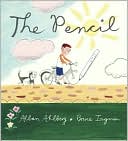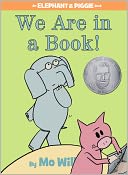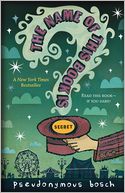Getting ready to start teaching a text structure unit? Here are some tips on how to get ready.
Create tabbed binders
My first step this year was to put together tabbed binders for everyone in the grade. This year, I have two new teachers on the team, plus I'm working with two co-teachers. Getting everyone the same basic materials helps to keep us all together.
The tabs on the binder are simple. First, I included copies of the assessments that we'll use. Then I included the text structures that we plan to teach, in order. I like to start with the time-based structures--chronological order, cause and effect, and problem/solution--before moving onto the other structures of compare and contrast and description.
Gather resources
Our next step was to put together our existing resources. Since I've been teaching text structure for several years, I have quite a few texts that I've gotten together. (I've also written quite a few--see the "Text Structure" tab at the top of the page for these.) We also looked at the Scholastic News from this year, issues of
Click and
Ask magazines, and various teacher resource books. If your state has a state testing resource site, you may find that some of these texts will work.
It's helpful to acquire as many texts as possible. When it comes time to choose and allocate texts, the more, the better. (I also like that rich feeling that I have when I've found tons of great reading selections! I may not use them all, but I like knowing that I can.)
To theme or not to theme?
This is a tricky question. In my grade, we just finished a month-long theme study of Antarctica. Themes can be wonderful because they provide students with opportunities to see the same ideas again and again, and help kids to build strong networks of knowledge.
But the problem with themes is that they might encourage the use of less-than-optimal texts. For teaching text structure, it's best to use the highest quality texts that you can find to illustrate the text structures. Grabbing a text that's okay just because it fits into a theme may not help you in the end.
I like to find a middle ground by using little themelets. For chronological order, for example, I use the "Great Chicago Fire" text from
Toolkit Texts. This matches well with the cause and effect "The Boston Molasses Disaster" from
Fluency Formula, as well as the
"What Is a Tsunami" that I wrote. But a disaster theme can only take you so far. By the time we get to problem and solution, I'm happy to move on to animal-based texts and happier topics.
Don't forget the bookroom!
While you're looking for texts, remember to look at the bookroom. We've been slowly expanding our selection of text structure texts in the past few years, adding titles like
A Place for Butterflies and
Shopping: Then and Now. If you don't find much, this might be a good way to decide on what to purchase in upcoming years.
Choose core reading materials and guided reading materials
This is the hard part. At this point, work with your colleagues to decide which texts will be for core instruction, which for guided reading, and which for independent center or homework. For core instruction, I look for grade-level texts that are excellent examples of different text structures.
My list of texts changes from year to year. While I do have some favorites, I also like to add new ones related to my students' interests. I do write some texts, especially when I can't find something that's just right. I've made a number of
centers for my students as well.
Plan how you will introduce each structure
I've played around with making different Powerpoints (
regular,
easy)for introducing the structures. I like these because they are so visual. This year, I'm going to use the relevant Powerpoint slides to introduce each structure, and then work with different texts.
Decide on graphic organizers and models
If you are in a co-teaching situation, it's important to decide ahead of time what you want your graphic organizers to look like. Do you want to use the same ones for each structure, or do you want to expose students to different organizers? Making a common poster or guide sheet is helpful for this.
Plan for summarizing as well
As I teach different text structures, I like to have kids work with summarizing within each structure. Sometimes this is a choose-the-best-summary activity, sometimes it's a scaffolded summary, and sometimes it's a summary writing activity. I've found that this distributed approach to summarizing is highly effective.
Enjoy!
I look on teaching text structure as a fun way to help students become better readers. They usually enjoy it as well. From choosing texts to planning graphic organizers, it can be a real adventure!








